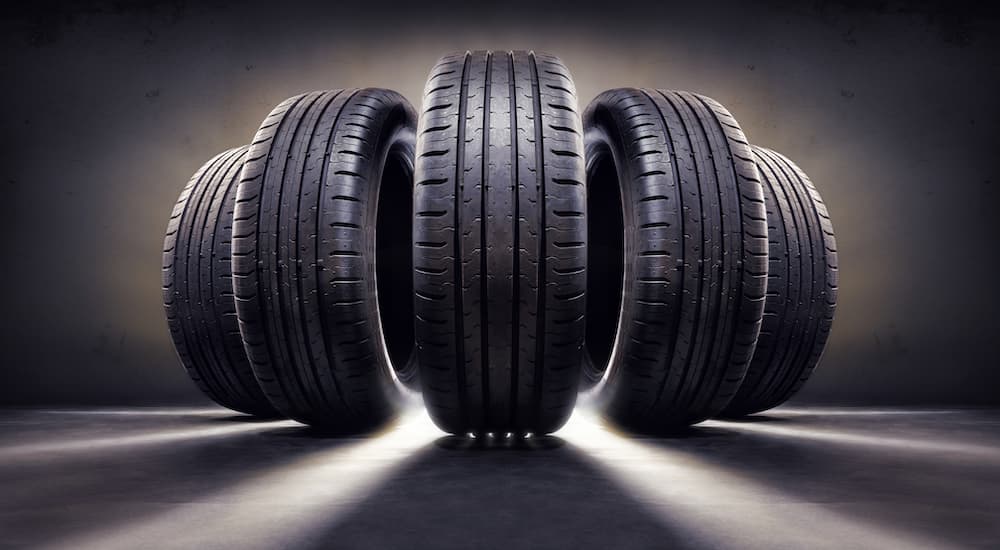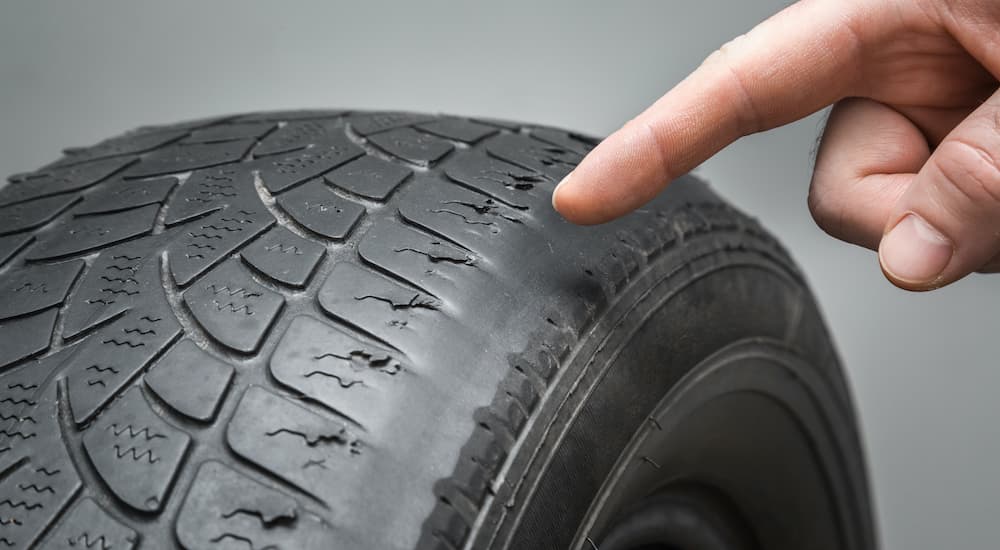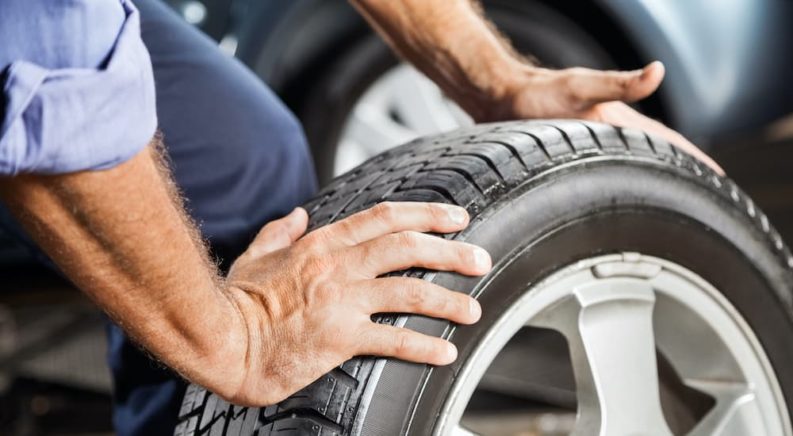Cruising down the dusty backroads during summer, navigating rain-slicked streets in the spring, and cautiously maneuvering on icy winter roads all call for specific tires. Not every driver will want to have the same set of tires on their vehicle all year long, and depending on where you live and what you drive, winter, summer, or all-terrain tires may be advised. Designed to expertly handle the elements, specialized tires are popular among many different types of drivers, whether you’re driving an ultra-fast sports car or a dependable weather-savvy commuter. But after you’re done browsing the options at tire stores in Cincinnati, Seattle, Savannah, or anywhere else in the country, you may have a few questions about caring for your new tires. From how to store tires and when they should be replaced from age to the proper way to check them and more, let us help you with these important tire care tips.
Tip #1: Store Tires Properly
All types of tires will need to be properly stored when they’re not in use. You may have a set of tires that perform optimally during the summer months that you’ll need to store when you put your winter tires on or vice versa. This means that proper storage is key to ensuring the longevity of each set of tires. First and foremost, having a designated area to store your tires is recommended; don’t just toss them anywhere they’ll fit. Experts recommend a cool and dry storage area, out of direct sunlight and away from potential moisture.
It’s advised to clean each tire prior to placing them in their own storage bags. Some soap and water will work best to remove any dirt and debris from the tires before putting them to rest for the season. You’ll want to store each tire in its own bag, and many tire brands typically offer storage bags for this very purpose. Try to remove as much air from the storage bag as you can to ensure as airtight of a seal as possible. It’s important that your tires stay covered and out of the elements, like moisture and sunlight, as this will deteriorate them and damage their integrity.
If you’re able to, try and store your tires in a vertical position, as opposed to stacking them on top of one another. This will reduce the stress placed on the tires, which can end up causing damage. And never place them directly on the ground. Elevate them slightly by using a piece of wood or a platform to reduce the risk of your tires coming into contact with moisture or dirt. By taking the extra time to ensure you’re storing them properly, they’ll be ready to roll in peak condition when it’s time to put them back onto your vehicle.
Tip #2: Keep Up with Routine Maintenance
Just because you haven’t driven on a particular set of tires in a few months, it doesn’t mean that they’re in perfect condition, which is why taking them in for maintenance and a quick check is suggested. If you stored them mounted on wheels, they may have lost air during the season or need to be rebalanced to ensure that they’re ready to provide you with the best ride possible. Tires should be rotated every 5,000-7,500 miles, which is usually around the time you switch from winter to summer tires. That means it’s important to mark the tire’s positions before you store them for the season.
We recommend bringing your vehicle into a reputable service center when you want to put new tires on to make sure all aspects get addressed. This way, not only will your tires be placed on your vehicle correctly, they’ll be checked and adjusted so that you’re able to make the most out of any upcoming journey. Additionally, it is important to make sure you have matching tires for balanced performance, and a tire center can make sure the tread depths are all even.

Tip #3: Know When They Need Replacing
It’s fairly common knowledge that tires need to be replaced when they’re visibly worn, but what if they still appear to be fine? Well, that may not always be the case, especially if you’ve had them for a while. All tires will need to be replaced over time, which is why bringing them into a certified service center is advised. Even if you haven’t driven on a particular set of tires for very long, the amount of time you’ve owned them can affect their performance. That’s why it’s recommended to replace your tires approximately every six years to ensure maximum performance and, most importantly, maximum safety.
Tires that are old may start to deteriorate, even if it’s not completely noticeable, which means that you may be endangering yourself, your passengers, and anyone traveling alongside you. Rubber, just like any other material, can become damaged with age, and when rubber gets older, it becomes dry and cracked, which can jeopardize the safety of your ride. The last thing you want is a blow-out or a flat tire, so do yourself a favor and get your tires replaced regularly, then you never have to worry during your travels. If you’re unsure of how old your tires are, this is easily deciphered by taking a glance at the tires themselves. There will be a four-digit code on each tire, with the last two digits being the year in which they were manufactured.
Tip #4: Regularly Check Your Tires
This will go hand-in-hand with routine maintenance. Not only will you want to pay attention to how your tires look, but you’ll also want to keep in mind how your vehicle is driving. On the surface, you’ll want to regularly check tread levels, as well as tire pressure, which is where a handy tire gauge is advised. It’s important to maintain your tires at their proper pressure levels because when tire pressure is too low, their grip on the road will suffer, making it difficult to navigate the various weather patterns that develop during the year.
Staying alert about how your vehicle performs, as we mentioned above, will also help you know when something is amiss. If your vehicle is pulling to one side or vibrating, it may be time to check your tires and make any necessary adjustments. In short, stay vigilant when it comes to your tires. Even though you may not use them all year round, it doesn’t mean that they can go without adjustments and maintenance.

Tip #5: Do Not Mix Tires On Your Vehicle
When it comes to tires, each type of tire performs best during the season they were designed for, so mixing winter with all-terrain, summer with winter, and so on is not recommended. Grip will vary, as will performance, wear and tear, and more, and failing to stick with a full set of the same type of tires may result in less than desirable results. Not only do you jeopardize the safety of your ride when you mix and match, but you also run the risk of more wear to your tires, especially if they all have different tread depths. It’s best to stick to the same type of tires for the front and rear axle of your vehicle for maximum comfort and longevity in your travels.
Make the Most of Your Tires
If you’re wondering whether or not you should opt for specific tires throughout the year, we recommend speaking with a service professional so that you can see your options. Remember, choosing specific tires to match the season is just part of your responsibilities as a driver. The other part includes everything we’ve discussed here today, so be sure to keep all of these helpful tips in mind in order to make the most out of your experience behind the wheel, whether it’s dry, humid, icy, wet, or muddy.

